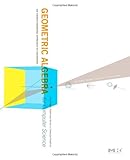https://www.amazon.com/Geometric-Algebra-Computer-Science-Re...
The authors have a website - geometricalgebra.net - where you can download a program which will display all the diagrams from the book and allow you to manipulate them. You can also render arbitrary low-dimensional geometric algebra constructions which helps tremendously with improving your intuition about how things work. I'd say it's at a middle ground of mathematical sophistication - it's a good mix of proofs and practical usage. It's almost entirely dedicated to applying geometric algebra to computer graphics, so you won't get as much out of it if you're interested in applications to physics, or just pure mathematics.
If nothing else, I finally know what a quaternion really is after going through this book.
It is to linear algebra what Lisp is to assembly.


Here are three great sources that helped me to understand GA:
1. https://www.amazon.co.uk/Geometric-Algebra-Computer-Science-...
2. https://www.amazon.co.uk/Linear-Geometric-Algebra-Alan-Macdo...
3. https://www.amazon.co.uk/Algebra-Graduate-Texts-Mathematics-... , pages 749-752
The first source gives great motivation and intuition for GA and its various products. Its mostly coordinate free approach is very refreshing and makes the subject feel exciting and magical. This is also the problem of the book, it's easy to end up confused and disoriented after working through it for a while. The second source is great because it grounds GA firmly on LA, and makes everything very clear and precise. The third source gives a short and concise definition of what a Clifford algebra is.